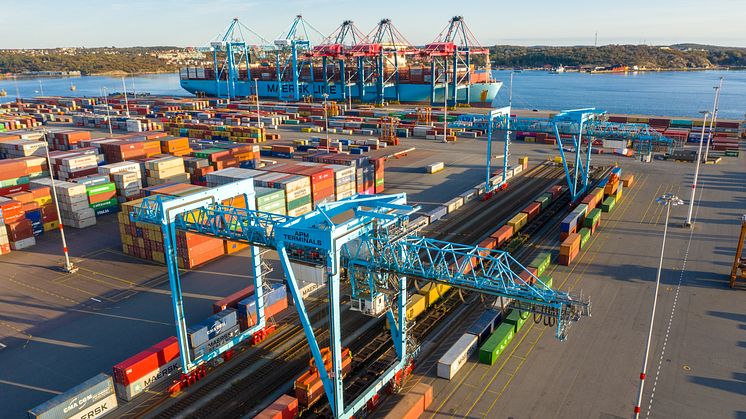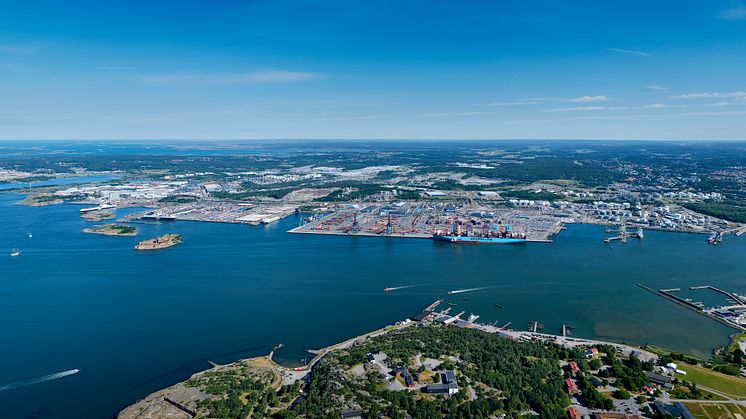
Press release -
Fossil-free last mile transport for rail shuttles operating to and from the Port of Gothenburg
Eskilstuna, Hallsberg and Jönköping are three of the most important freight distribution hubs in Sweden. The Port of Gothenburg is linking these towns to the continent with 19 departures each week. The freight carried on the shuttles is transported by truck between the terminals and local warehouses and logistics centres. Since November 5, these transport movements are fossil-free.
GDL Sjöcontainer operates the rail shuttles in Eskilstuna, Hallsberg and Jönköping. With a total of 19 departures, they handle the 1,500 20-foot containers that are transported to and from the Port of Gothenburg each week. Since 5 November, all the company’s trucks used for transport between the terminal and nearby warehouses and distribution centres run entirely on the renewable fuel HVO100.
“We thus operate fossil-free to the combi-terminals, achieving a last mile transport carbon emission saving of around 90%,” said Mikael Andersson, GDL Sjöcontainer AB chief executive.
The trucks used to transfer the freight between rail truck and road truck at the combi-terminals also run on HVO100, resulting in a further reduction in particle and carbon emissions.
The use of rail on the routes to and from Gothenburg, in combination with GDL’s fossil-free distribution, produces a saving of around 18,000 tonnes of carbon dioxide annually, compared with if the transport were to take place by road using conventional diesel.*
If the new addition to the system – local deliveries and terminal trucks powered by HVO100 – were viewed in isolation, the reduction in climate emissions is in excess of 2,500 tonnes per year.
Rail transport on the increase throughout Sweden
In addition to Eskilstuna, Hallsberg and Jönköping, the Port of Gothenburg rail network, Railport Scandinavia, includes a further 30 terminals at locations throughout Sweden. There are 70 departures between these terminals and the Port of Gothenburg each week.
“Rail is hard to beat when you take account of the environment, finances, capacity, and reliability. In combination with collaborating rail and terminal operators, freight owners and other parties in and around the port, these are the success factors that have for a long time allowed rail transport to flourish,” said Claes Sundmark, Vice President, Sales & Marketing, Gothenburg Port Authority.
From 2000, the proportion of containerised goods transported by rail to and from the port has risen from 20 to more than 60 per cent. This is very definitely a stand-out figure by international standards and the trend is set to continue. During the third quarter of this year rail volumes at the port increased by 12 per cent.
“Climate and the environment are crucial factors when creating logistics systems. Bearing this in mind, we are extremely pleased that companies such as GDL are continuing to develop the rail-based concept as the climate-smart alternative for inland transport,” said Claes Sundmark.
Fact file: HVO100
HVO100 is a renewable diesel fuel that can be used to power both small and large diesel engines without any need for adaptation. The raw material is made up of residual and waste products, which are then treated with hydrogen to produce a synthetic diesel.
* Figures published by IVL Swedish Environmental Research Institute.
Topics
Fact file: Port of Gothenburg
The Port of Gothenburg is the largest port in Scandinavia. Around 30% of Swedish domestic and foreign trade passes through the Port of Gothenburg and over 50% of all container traffic. The port is a full-service port, and offers industry guaranteed, climate-smart access to the whole world. Direct services to key markets ensure highly efficient, sustainable, and reliable transport 24 hours a day, 365 days a year. The focus is firmly on sustainability, innovation, and digitalisation in a concerted effort to maintain the ongoing development of climate-efficient freight transport and calls by vessels. With over 30 rail shuttles offering daily departures, companies throughout Sweden and Norway have a direct, climate-neutral service to the Port of Gothenburg. The port handles energy products, vehicles, ro-ro units, containers and passengers. 22,000 people are employed at the port.
Follow us on:
Facebook
Instagram
LinkedIn
Twitter
www.portofgothenburg.com


